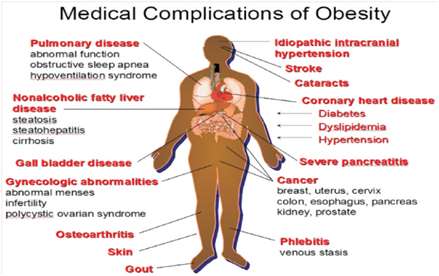
What is obesity?
The Centers for Disease Control defines Obesity as an excessively high amount of body fat in relation to lean body mass. It is commonly measured by body mass index (BMI). BMI Calculator which calculates the relationship of weight to height. An adult with a BMI of 30 or more is considered obese.
How do we quantify obesity?
This is done by calculating the persons body mass index.BMI is calculated by dividing the persons weight in kilograms by the square of body height in metres.
BMI = Weight in kgs
---------------------
(Height in metres)*2
How overweight are you?
All over the world populations are becoming more and more overweight. To measure this, experts now talk about your BMI, or body mass index. This is calculated by dividing your weight in kg by your height in metres, twice. Here are some basic definitions for you.
Weight is commonly measured in Kilograms. The degree of obesity is better measured as BMI (body mass index) which is a ratio of weight and height [Wt in Kg / (Ht in metres)2]. Obesity can be graded as:
Degree of Obesity |
Body Mass Index |
|
|
For Westerners |
For Delhins |
Overweight |
25.0–29.9 |
22.5 – 27.5 |
Obesity |
30–34.9 |
27.5 – 32.5 |
Severe obesity |
35–39.9 |
32.5 – 37.5 |
Morbid obesity |
40–49.9 |
37.5 – 47.5 |
Superobesity |
> 50 |
> 47.5 |
Obesity becomes morbid obesity when an adult is 45 kgs or more over ideal body weight has a BMI of 40 or more or has a BMI of 35 or more in combination with a health-related condition such as obstructive sleep apnea or a disease such as type 2 diabetes or heart disease.
Know More other information
Appendix Surgeon in Delhi
Obesity puts your health at risk
Obesity dramatically increases the risk of:
| Heart disease | |
| Hypertension | |
| Diabetes | |
| Sleep Apnea (interrupted breathing during sleep) | |
| Osteoarthritis (wearing away of the joints) | |
| Menstural irregularity | |
|
|
|
|
|
|
|
|
|
|
|
|
|
|
| Venous Stasis Disease in the lower extremities | |
|
|
|
|


